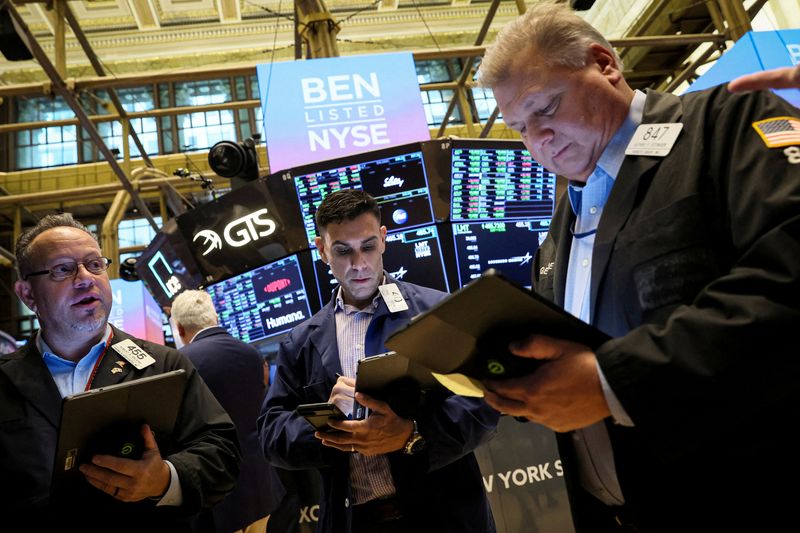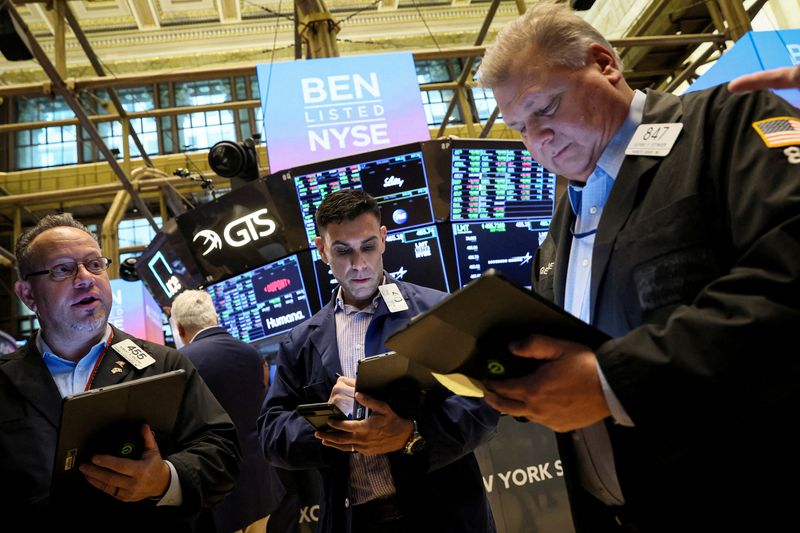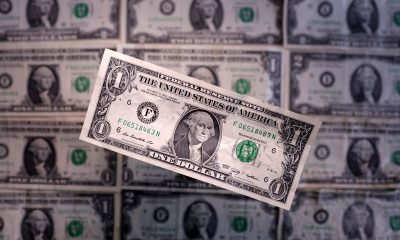Commodities
Marketmind: Second-half lift, Tesla beat


© Reuters. FILE PHOTO: Traders work on the floor of the New York Stock Exchange (NYSE) in New York City, U.S., November 15, 2022. REUTERS/Brendan McDermid/File Photo
A look at the day ahead in U.S. and global markets from Mike Dolan
A holiday-staggered week for U.S. markets looks like picking up where a bumper first half of the year ended on Friday, with Tesla (NASDAQ:) wowing the gallery with impressive delivery stats.
Tesla stock zoomed 5% higher ahead of Monday’s open, beating forecasts with record deliveries in the second quarter that were 83% up on the prior year and up 10% on the first quarter.
That upbeat news underlines the best first half performance in 40 years for the tech-heavy Nasdaq – and the eye-popping 74% year-to-date boom in the 10 biggest U.S. digital and tech stocks contained in New York’s FANG index.
The news was a bit less rosy for America’s largest cap stock Apple (NASDAQ:), which last week became the first ever company to top a $3 trillion market capitalization.
Although it appeared to have little immediate effect on its stock out of hours, Monday’s Financial Times reported that Apple had been forced to make major cuts to production forecasts for its Vision Pro augmented-reality headset due to design complexity.
After the closed at its highest level in more than year on Friday, and was up 16% for 2023 so far, bourses in Asia and around the world advanced on Monday too.
Aided by loose monetary policy, the exporting-fillip of a weakening yen and new chip-sector alliances, closed at a 33-year high. Italy’s financials-heavy benchmark MIBFTMIB> hit its highest since 2008, spurred on Monday by a 5% surge in Generali (BIT:) after news Italy’s insurance regulator authorised a major investor Delfin to raise its stake to above 10%.
U.S. stock futures were a fraction higher again, with Tuesday’s Independence Day holiday likely to keep trading volumes subdued.
But the surprising strength of AI-infused U.S. stocks in the first half of the year leaves a high bar for the macro economy over the final six months if the gains are to broaden out beyond the leading tech winners.
Manufacturing is certainly not the driving force at the moment, with final business surveys for June showing stalling growth or contraction in Asia and Europe as China’s much-vaunted economic rebound stumbles.
U.S. Treasury Secretary Janet Yellen is due to visits Beijing this week.
The final June U.S. manufacturing readout later on Monday is likely to mirror global surveys, but this week economic focus will be on the buoyant labour market. June national payrolls and other related reports are due out by Friday.
Despite last Friday’s news of a further easing of U.S. core inflation in May, markets are taking Federal Reserve signals at their word and, given the prevailing tight jobs market, pricing 35 basis points more of interest rate rises this year. Futures now don’t price a full quarter point cut from the implied peak for almost a year.
Two-year Treasury yields rose as high as 4.96%, their highest in almost 4 months. The 2-to-10-year yield curve inverted to 110bp – its most in more than 40 years.
Events to watch for later on Monday:
* S&PGlobal final U.S. manufacturing survey for June, equivalent reports from around the world
* Treasury auctions 3 and 6-month bills
(By Mike Dolan; Editing by Toby Chopra; mike.dolan@thomsonreuters.com. Twitter: @reutersMikeD)
Commodities
Oil prices rise; U.S. crude inventories plunge, Russia-Ukraine truce eyed
Commodities
India’s Reliance to stop buying Venezuelan oil over US tariffs, sources say
Commodities
Oil prices climb on Venezuela supply worries

 Forex3 years ago
Forex3 years agoForex Today: the dollar is gaining strength amid gloomy sentiment at the start of the Fed’s week

 Forex3 years ago
Forex3 years agoUnbiased review of Pocket Option broker

 Forex3 years ago
Forex3 years agoDollar to pound sterling exchange rate today: Pound plummeted to its lowest since 1985

 Forex3 years ago
Forex3 years agoHow is the Australian dollar doing today?

 Cryptocurrency3 years ago
Cryptocurrency3 years agoWhat happened in the crypto market – current events today

 World3 years ago
World3 years agoWhy are modern video games an art form?

 Commodities3 years ago
Commodities3 years agoCopper continues to fall in price on expectations of lower demand in China

 Economy3 years ago
Economy3 years agoCrude oil tankers double in price due to EU anti-Russian sanctions



























